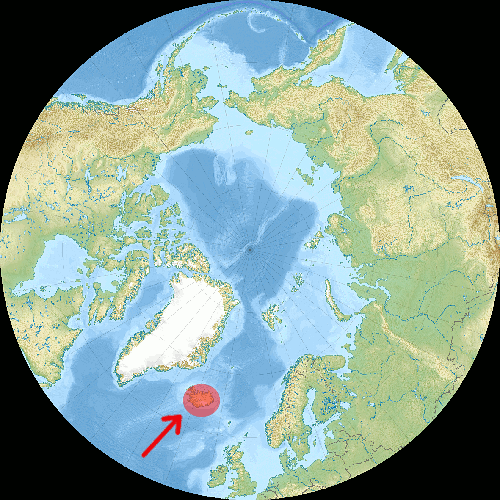
Circle the area on this map

B. The world’s biggest island, Greenland is about 180 miles northwest of Iceland. Most of Greenland is covered in ice and lies within the Arctic Circle. According to the Icelandic sagas, it was named by Erik the Red who settled on the island after he was exiled from Iceland. He supposedly hoped that the pleasant name would attract settlers.
C. Beginning in 874, Norsemen from Norway with slaves from Ireland and Scotland settled on the island, which is warmed by the North Atlantic Current bringing waters heated in the Gulf of Mexico. Iceland along with Denmark, Finland, Norway, Sweden are Nordic countries. Norway shares the Scandinavian Peninsula with Sweden and part of Finland.
A. Iceland is considered part of Europe, while the even more sparsely populated Greenland is part of North America. Iceland actually sits on the Mid-Atlantic Ridge which is the boundary between Eurasian and North American continental plates. The island was formed by volcanic eruptions of a hotspot on the ridge.
D. Reykjavík, which means “bay of smoke”, was named by the first Norse settlers who noticed steam coming from the ground. The steam was generated by the ongoing volcanic activity that still provides Iceland with abundant geothermal energy.